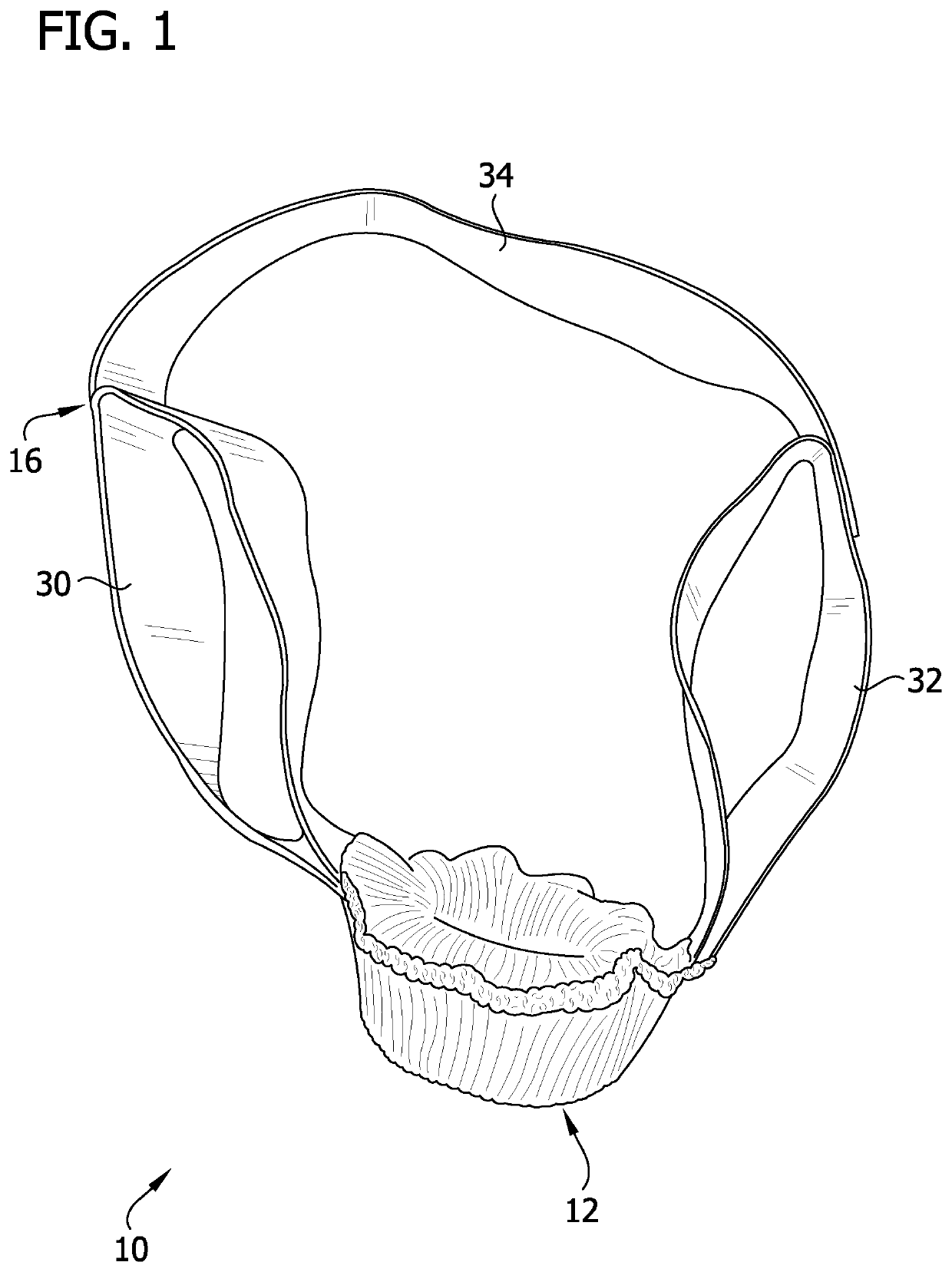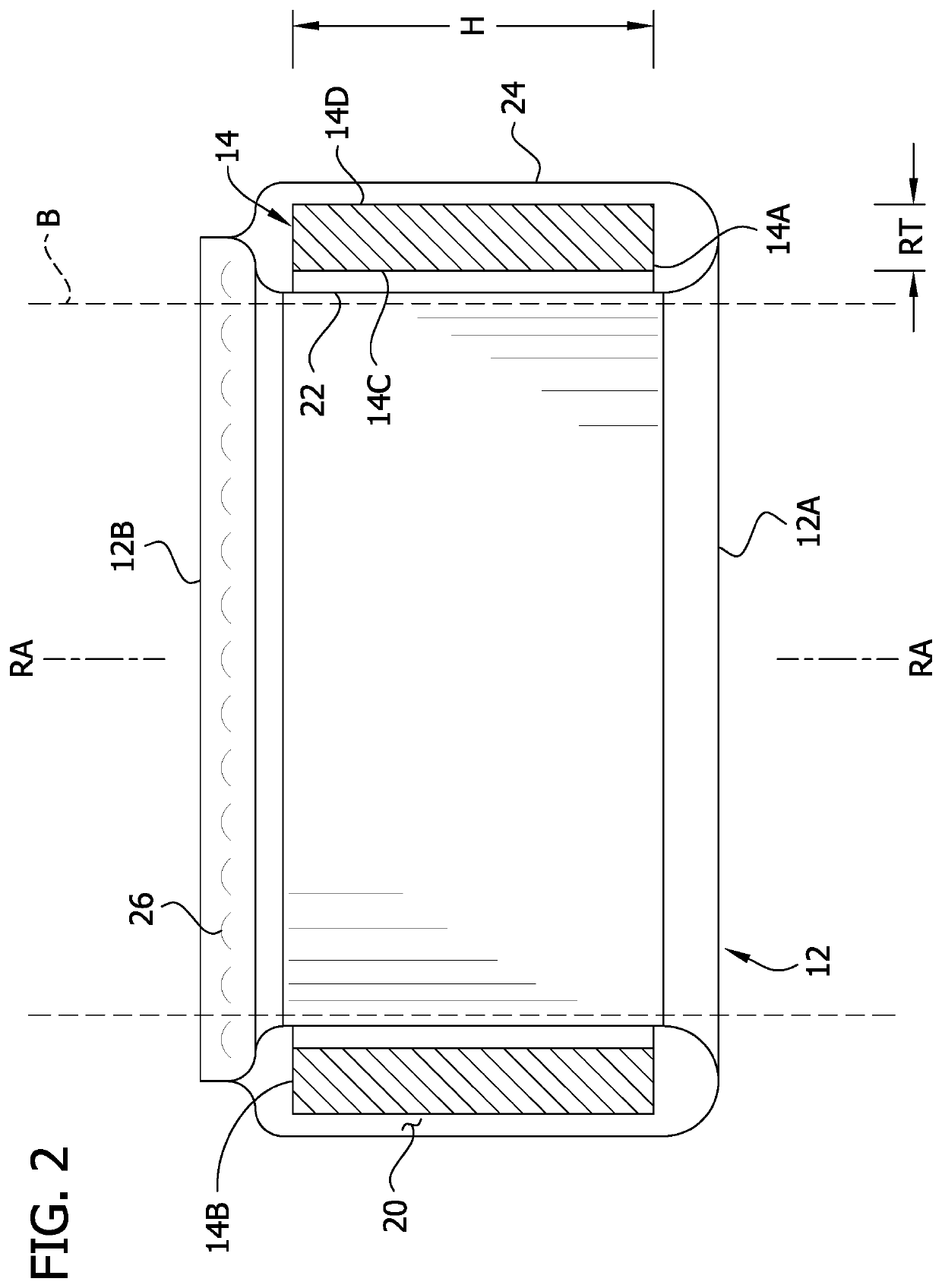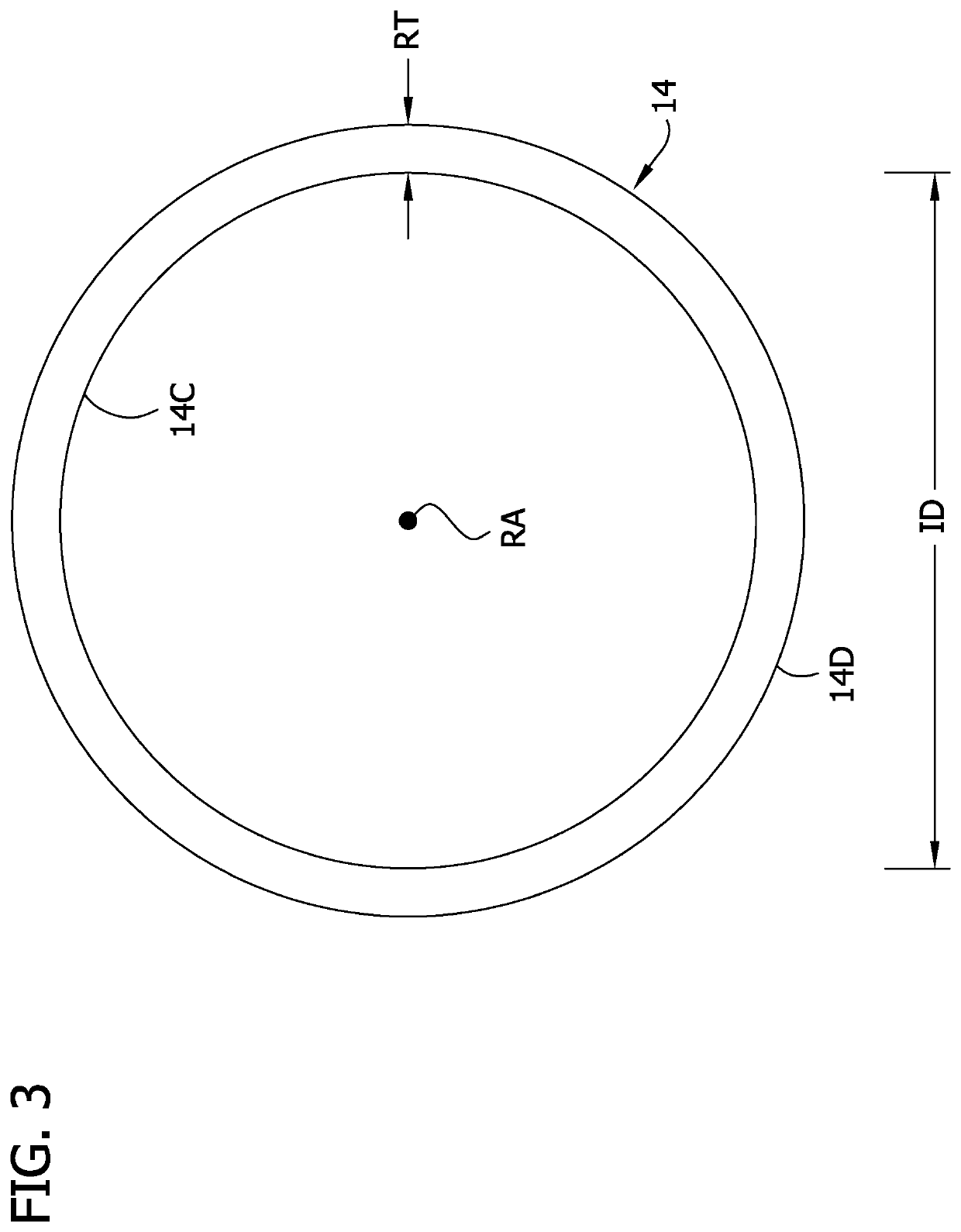Non-pneumatic surgical tourniquet
a surgical and non-pneumatic technology, applied in the field of non-pneumatic surgical tourniquets, can solve the problems of pneumatic system cuffs, pneumatic system cuffs can be quite costly, and the pneumatic system is expensive in large par
- Summary
- Abstract
- Description
- Claims
- Application Information
AI Technical Summary
Benefits of technology
Problems solved by technology
Method used
Image
Examples
Embodiment Construction
[0033]Referring to FIGS. 1 and 2, one embodiment of a non-pneumatic tourniquet is generally indicated at reference number 10. The tourniquet 10 includes an annular cover, generally indicated at 12, and an elastic compression ring, generally indicated at 14, which is received in the annular cover. A handle, generally indicated at 16, is attached to the cover 12 for pulling the tourniquet 10 onto a body part B of a subject (e.g., a human or animal surgical patient). Suitably, the tourniquet 10 is sized for a particular type of body part B (e.g., a portion of a limb) and may be configured to operatively restrict blood flow to any body part of that type within a normal size range (i.e., the tourniquet may be a one-size-fits-all device). In the illustrated embodiment, the tourniquet 10 is configured to operatively engage the arm of a patient to restrict blood flow to a distal portion of the arm. Other embodiments of tourniquets may be configured to operatively engage and restrict blood f...
PUM
 Login to View More
Login to View More Abstract
Description
Claims
Application Information
 Login to View More
Login to View More - R&D
- Intellectual Property
- Life Sciences
- Materials
- Tech Scout
- Unparalleled Data Quality
- Higher Quality Content
- 60% Fewer Hallucinations
Browse by: Latest US Patents, China's latest patents, Technical Efficacy Thesaurus, Application Domain, Technology Topic, Popular Technical Reports.
© 2025 PatSnap. All rights reserved.Legal|Privacy policy|Modern Slavery Act Transparency Statement|Sitemap|About US| Contact US: help@patsnap.com



